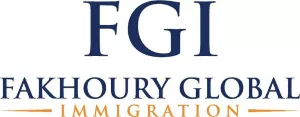The U.S. Department of Homeland Security's website "Study in the States" released an article describing the difference between the F-1 and J-1 Visas. Both F-1 and J-1 visas may permit international students to study at a college or university in the United States. However, there are key differences between the two programs.
F-1 Visas
An F-1 student's primary purpose for coming to the U.S. is to complete a full-time program of study at any grade level at a Student and Exchange Visitor Program (SEVP)-certified school. For many F-1 students, this program of study is a postsecondary education at a SEVP-certified college or university. Because studying is an F-1 student's primary purpose, students with F-1 visas must be enrolled in a full course of study while in the U.S. and must follow the rules to maintain their F-1 student status. While studying in the U.S., F-1 students have a designated school official (DSO) at their college or university to help guide them through the international student life cycle and make sure they maintain their status.
J-1 VISAS
J-1 university or college students must pursue a full course of study only at a postsecondary, accredited academic institution in the U.S. to maintain their J-1 status. The J-1 College and University Student Program offers study in all fields and opportunities to gain important career-related training as a student intern in a program that will fulfill the educational objectives for the student's degree program in their home country. J-1 university or college students, like all J-1 visa holders, have a cultural component to their program in addition to their academic work. This component gives J-1 students an opportunity to engage more fully with U.S. citizens and share their cultures with their U.S. host communities. J-1 university or college students coordinate with the designated program sponsor's37 Responsible Officer. Program sponsors are organizations designated by the U.S. Department of State's Office of Private Sector Exchange. These program sponsors monitor the health, safety and welfare of J-1 students throughout their program and ensure they are pursuing a full course of study at a U.S. postsecondary, accredited academic institution and maintaining their status.
To learn more about F-1 students, visit the Students page38 on Study in the States. For additional information about J-1 program specifics, check out the J-1 College and University Student Program page39 on the J-1 Visa Exchange Visitor Program website.
The content of this article is intended to provide a general guide to the subject matter. Specialist advice should be sought about your specific circumstances.

